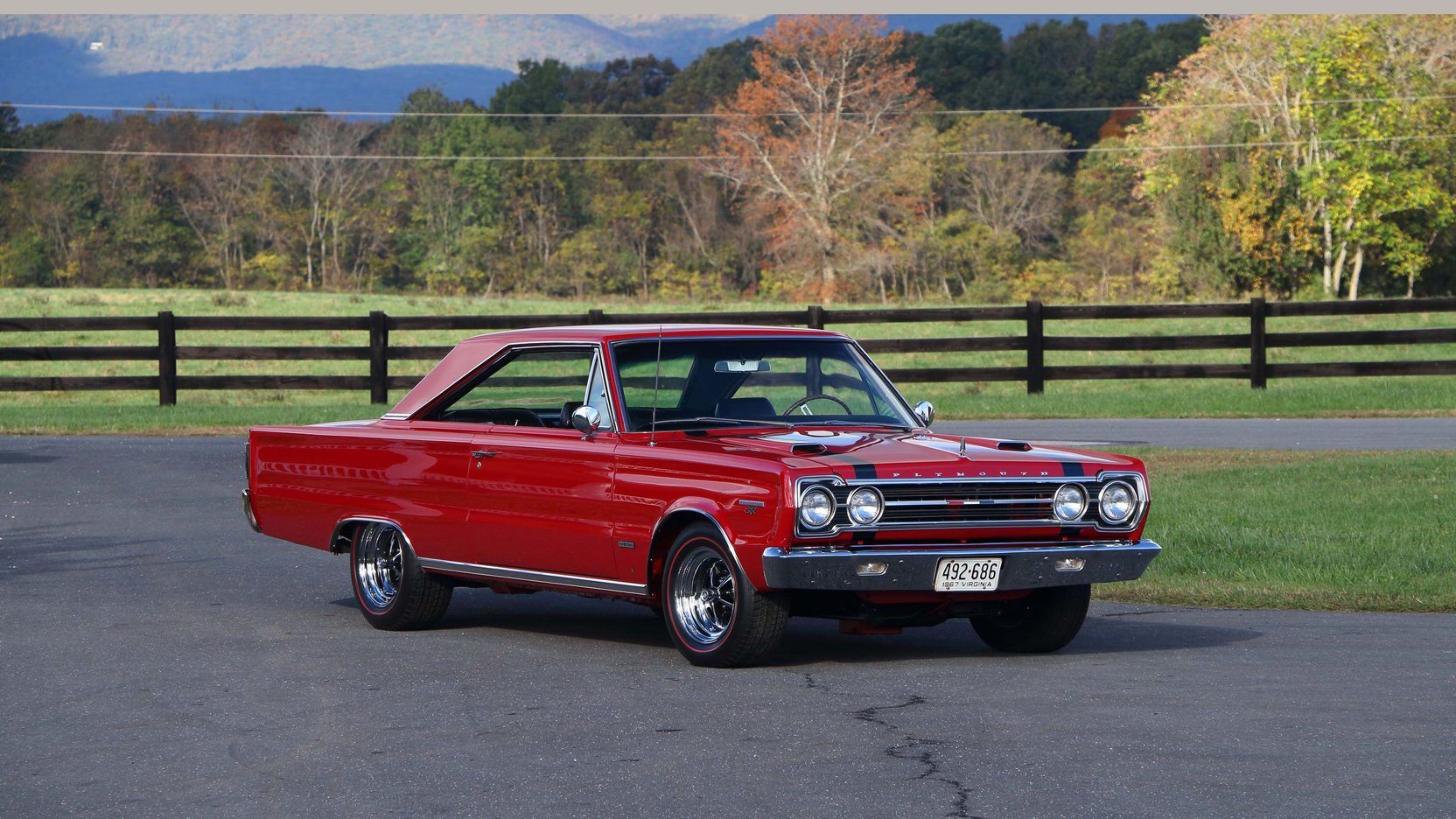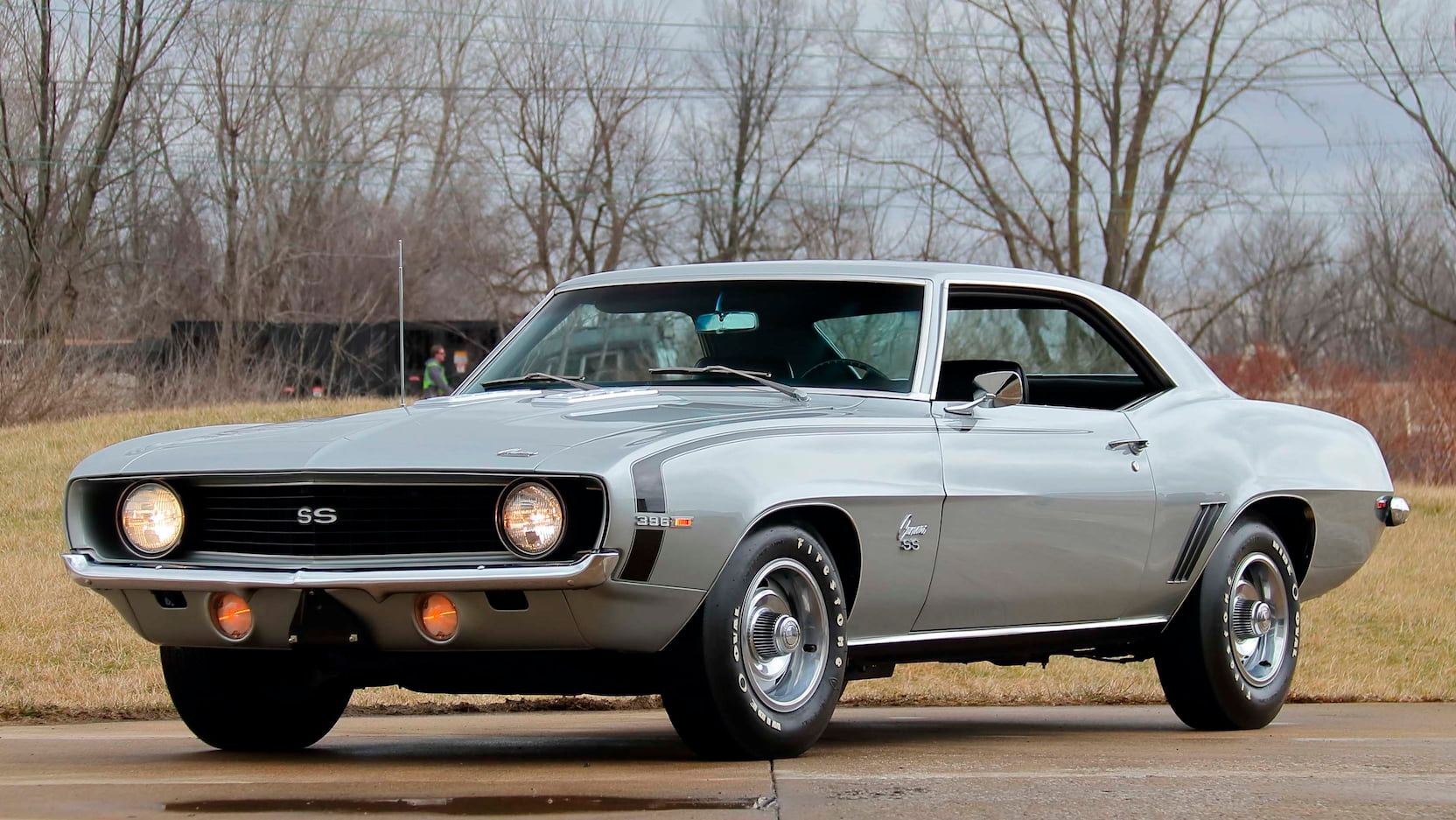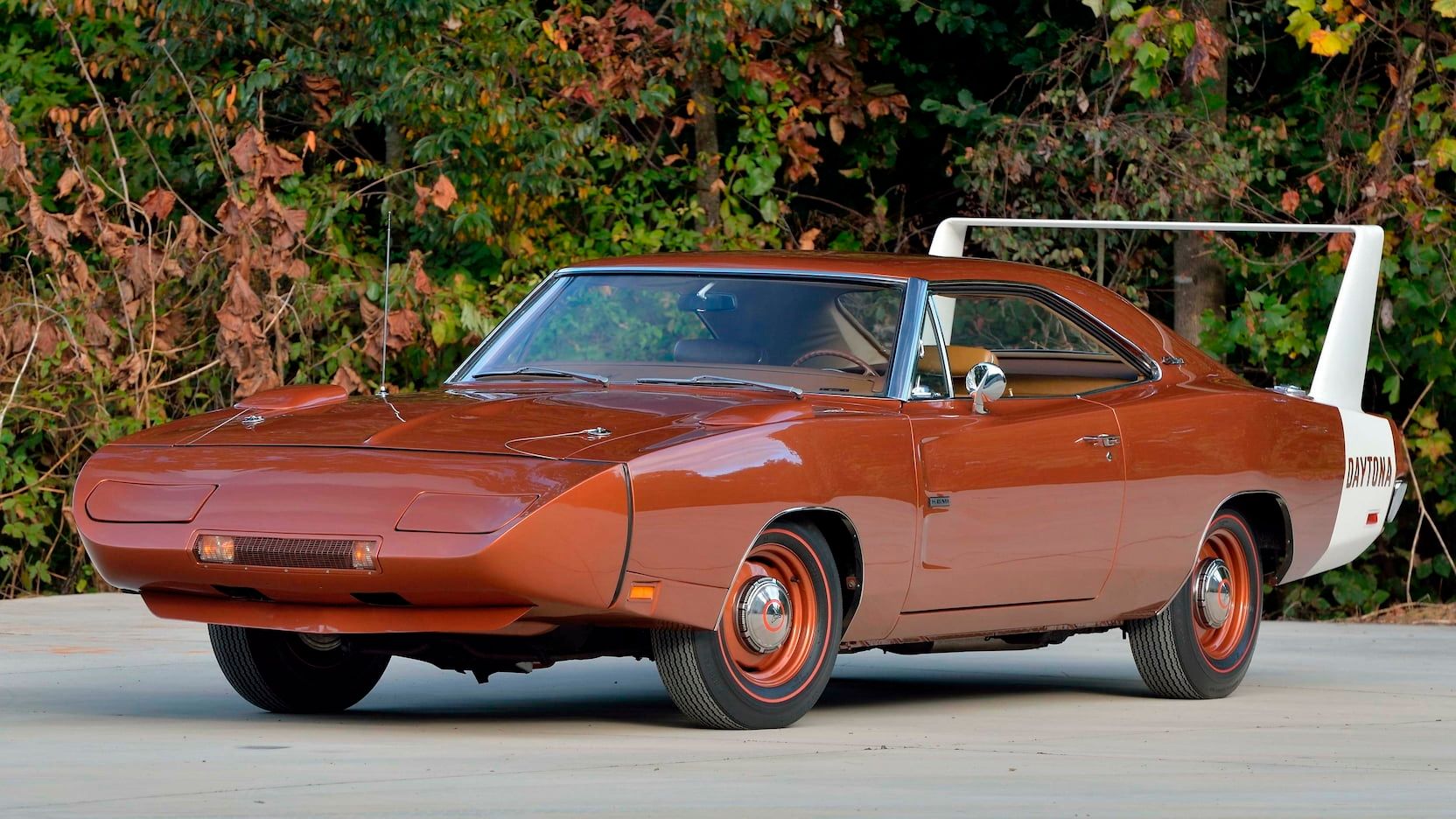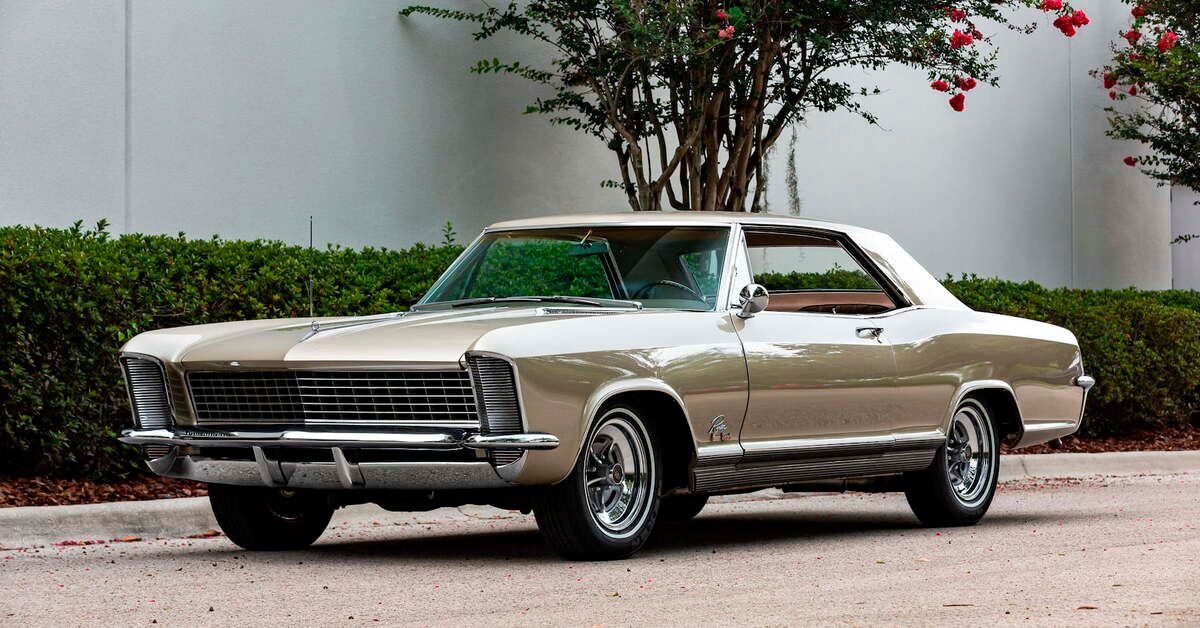The 1960s was a pivotal moment in muscle car history, with the Big Three—General Motors, Ford, and Chrysler—leading the way with big cars, big hoods, and lots of chrome. During the muscle car era, young buyers were the focus, and automakers were churning out different models to satisfy their thirst for power and speed. Some of the most badass muscle cars ever made, like the Ford Mustang, Chevrolet Camaro, Pontiac Firebird, and Plymouth Barracuda, can be traced back to the 1960s. Even the Dodge Challenger, which is considered the king of muscle cars, was introduced in the fall of 1969.
Just as muscle cars became bigger, lighter, and faster in the 1960s, technologies became better. The 1960s saw the introduction of technologies such as electric windows and intermittent windshield wipers, while the installation of seatbelts became mandatory for all automakers. So, if you are looking for 1960s muscle cars that don’t sacrifice comfort for performance, this list is for you.
10 1967 Plymouth GTX 426 Hemi
The Plymouth GTX is a midsize upscale-trimmed muscle car introduced as the Belvedere GTX in 1967. The GTX’s blacked-out grille, “pit stop” chrome gas cap, and fiberglass simulated hood scoops distinguished it from the Belvedere.
Although it was dubbed the “gentleman’s muscle car”, there was nothing gentlemanly about the GTX’s standard 440-cubic-inch (7.2-liter) Super Commando V8 engine that produced 375 hp. For comfort and smooth driving, the GTX came with bucket seats, heavy-duty suspension, simulated woodgrain power steering, and a center console.
9 1969 Chevy Camaro SS
The Chevrolet Camaro received significant updates for 1969, with the body panels, fenders, and nose becoming more expressive and giving the car a substantially sportier look. That said, the powertrain as well as the roof and deck lid remained unchanged.
Chevrolet introduced square gauges for the 1969 Camaro SS to replace the round ones that were used before, and the design inspired the fifth-generation Camaro. Also, headrests became standard equipment for the 1969 Camaro SS, while air conditioning, four-speed manual transmission, and power steering were optional.
8 1968 Pontiac Firebird 400
If the base 1968 Pontiac Firebird is not potent enough for you, the Firebird 400 package will do the trick. For the 1968 Firebird, Pontiac replaced the vent windows with single-side windows and a flow-through ventilation system. To minimize axle hop when you take off hard, Pontiac introduced a multi-leaf set-up and staggered shocks to replace the single-leaf rear spring.
The standard 400-cubic-inch V8 produces 330 hp, but if you want more power, the rare Ram Air engine options are available. Bucket seats and a three-speed manual transmission are standard features of the 1968 Firebird 400, while a four-speed manual, air conditioning, power steering, and power windows are optional.
7 1969 Dodge Charger Daytona
The 1969 Dodge Charger Daytona features one of the most radical designs of the muscle car era with its gigantic two-foot rear spoiler. It reminds you of the Plymouth Road Runner Superbird, but it was specifically built to dominate the NASCAR circuit.
A 440 Mopar big-block engine was standard for the 1969 Charger Daytona. You could also opt for the legendary 426 Hemi with an output of 425 hp and 490 lb-ft of torque. The interior is furnished with vinyl bucket seats and a woodgrain center console. With the Charger Daytona’s record-breaking performance and outrageous design, it can never be forgotten, even though just over 500 examples were made.
6 1969 Pontiac Grand Prix SJ
The Pontiac Grand Prix comes with the appointments of a personal luxury car, but it’s a muscle car at heart. It is furnished with Strato bucket seats made of cloth and vinyl. The 1969 Grand Prix has a radical wrap-around cockpit-style dashboard and a radio antenna that’s embedded in the windshield.
The 1969 Grand Prix SJ came standard with a 428-cubic-inch V8 that produced 370 hp and 472 lb-ft of torque. For a few extra dollars, you could opt for the optional 428 H.O V8 with an output of 390 hp.
5 1962 Pontiac Catalina 421 Super Duty
There are many reasons to love the 1962 Pontiac Catalina Super Duty. For one, the Super Duty 421-cubic-inch was one of the largest displacement mills of the 1960s, and it was a hand-built engine. Optional for the 1962 Pontiac Catalina, the race-ready 421 Super Duty engine produced up to 405 hp.
The interior of the barely street-legal drag racer is elegant, but not exactly muscular. It is furnished with leather seats and a large-diameter horn-style steering wheel.
4 1964 Oldsmobile Cutlass 442
Even though the Pontiac GTO is considered the first true muscle car, the Oldsmobile 442 was introduced the same year as the iconic Pontiac. It was initially an option package for US-sold F-85 and Cutlass models before it became a standalone model in 1968.
Oldsmobile installed its largest engine offered for mid-sized cars—the 290-bhp 330-cubic-inch V8—on the Cutlass 442 and raised the output to 310 hp with the addition of a high-lift cam, and dual-snorkel air cleaner. Bucket seats, a heater/defroster, and a padded instrument panel were standard for the 1964 Cutlass 442.
3 1965 Buick Riviera GS
The Buick Riviera was a symbol of American substance and style in the 1960s. The 1965 Riviera GS was powered by a 425-cubic-inch V8, with an output of 360 hp. The Riviera didn’t share its bodyshell with any other General Motors (GM) model and even critics couldn’t help but applaud its razor-sharp coupe look, with a low-profile roofline, short wheelbase, and rear-slanted grille.
The 1965 Riviera GS came well appointed, with standard features like leather bucket seats, upper and lower dash safety pads, walnut paneling on doors and dash, a tilted steering column, and full carpeting.
2 1969 Buick Wildcat
Sharing the GM’s full-size B-body platform with the Chevy Impala and Pontiac Catalina, the Buick Wildcat was somewhere in between a personal luxury vehicle and a muscle car. Although it was a bit weighty, the Wildcat was a roomier alternative to Impala SS and Ford Thunderbird.
The 1969 Wildcat was powered by a 430-cubic-inch V8 that generated up to 360 hp. The Wildcat was a step up from the Buick LeSabre in terms of luxury, cachet, and even performance.
1 1969 Mercury Cyclone CJ
Even though the Mercury Cyclone might not be the first muscle car that comes to mind when you think of the muscle cars that made the 1960s special, it was Mercury’s response to the Plymouth Road Runner. With its fastback streamlined look, the Cyclone CJ gave the impression that it was meant for high-speed NASCAR racetracks.
Ford claimed the 428-cubic-inch V8 engine produced 335 hp, but that was just a way of keeping insurance costs down for customers. The actual output of the 428 CJ was around 411 hp. Since the Cyclone CJ was designed to go against the likes of the Dodge Super Bee, Mercury furnished it with bench seats, while bucket seats were optional. Whisper-Aire air conditioning was available on Cyclone CJs with an automatic transmission.
Sources: Hagerty, How Stuff Works









